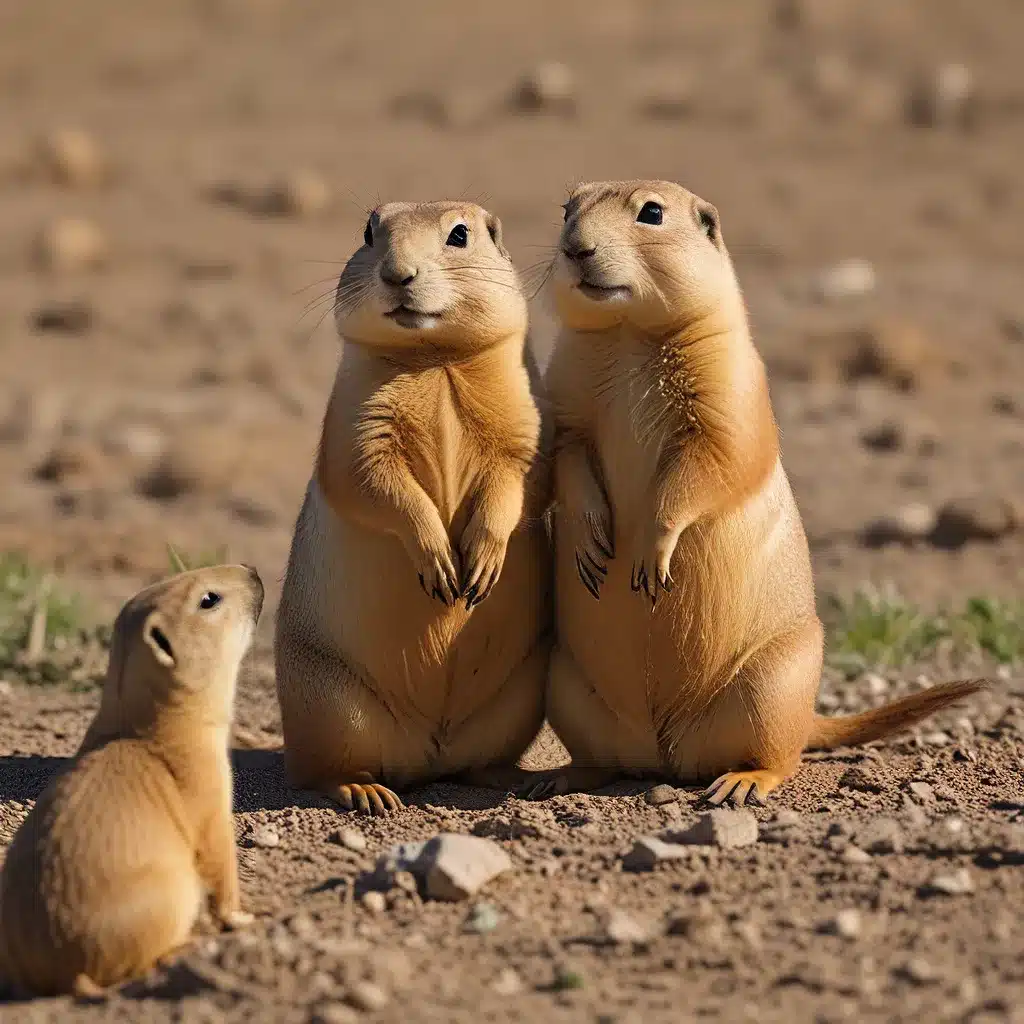
Dive into the Captivating World of These Charismatic Rodents
Have you ever caught a glimpse of those whimsical, furry creatures popping in and out of their burrows, yipping and chiming in with their neighbors? Well, my friends, those are none other than the fascinating prairie dogs – a rodent species that has captured the hearts and imaginations of researchers and nature enthusiasts alike.
Sure, they may look like overgrown hamsters to the untrained eye, but these social butterflies are so much more than meets the eye. Let’s embark on an adventure and uncover the intricate tapestry of their captivating social lives, shall we?
The Surprising Sophistication of Prairie Dog Societies
As it turns out, prairie dogs are not your average rodents. These charismatic critters have developed a level of social complexity that would put many human communities to shame. Imagine a vibrant, bustling metropolis, but underground – that’s the world of the prairie dog.
These remarkable rodents live in large, sprawling colonies that can span hundreds of acres and host thousands of individuals. But it’s not just about sheer numbers; prairie dog societies are meticulously organized, with each individual playing a distinct role within the community.
Imagine a prairie dog town divided into distinct “wards,” each with its own distinct hierarchy, communication system, and even a unique dialect. The colonies are also fiercely territorial, with the residents working together to defend their turf from intruders.
But the true marvel lies in their communication abilities. Prairie dogs have an impressive repertoire of vocalizations, using a variety of yips, barks, and chirps to convey everything from warnings about predators to the arrival of potential mates. They’ve even been observed using a complex “language” to describe the specific features of approaching humans or other threats.
The Emotional Bonds that Bind Prairie Dog Families
It’s not just their social structures that captivate us; the emotional lives of prairie dogs are equally fascinating. These rodents are surprisingly nurturing and affectionate, forming tight-knit family groups that put our own social bonds to shame.
Researchers have discovered that prairie dogs exhibit behaviors that resemble empathy, comforting and supporting one another in times of stress. They even engage in “play” behavior, chasing and tumbling with one another in what appears to be a display of pure joy.
But the real kicker? Prairie dogs are among the rare mammalian species that form lifelong, monogamous partnerships. Once a male and female pair up, they’ll remain devoted to one another, sharing a burrow and collaborating to raise their young. The strength of these bonds is truly remarkable, with studies showing that the loss of a mate can result in significant stress and even grief-like behaviors in the surviving partner.
The Fascinating Neurobiology of Prairie Dog Bonding
So, what’s the secret behind these incredible social and emotional behaviors? It all comes down to the intricate workings of the prairie dog brain.
Researchers have discovered that the formation and maintenance of prairie dog bonds are heavily influenced by the interplay of two key hormones: oxytocin and vasopressin. These chemical messengers, which are found in both humans and animals, play a crucial role in regulating social and emotional behaviors.
In prairie dogs, the distribution and abundance of receptors for these hormones in specific brain regions, such as the reward centers, are what differentiate the monogamous prairie dog from its more solitary counterparts. By manipulating the expression of these receptors, scientists have been able to dramatically influence the bonding behaviors of prairie dogs, turning typically promiscuous individuals into devoted mates.
But the story doesn’t end there. Recent studies using cutting-edge technology like CRISPR and neural imaging have revealed that the mechanisms underlying prairie dog bonding are far more complex than we ever imagined. It’s a symphony of genes, neural pathways, and environmental influences, all harmonizing to create these remarkable social and emotional connections.
Lessons from the Prairie Dog for Understanding Human Bonds
As we delve deeper into the captivating world of prairie dogs, it’s hard not to draw parallels to our own human social and emotional experiences. After all, we’re all part of the mammalian family tree, and the insights gleaned from these furry little critters are shedding new light on the biological foundations of our most cherished relationships.
Researchers have found that the same brain regions and hormonal systems that underpin prairie dog bonding are also involved in shaping human attachments, from parental love to romantic partnerships. And the discovery that prairie dogs can form lifelong bonds, complete with grief-like responses to separation, challenges the notion that such behaviors are uniquely human.
But the true power of the prairie dog lies in its ability to inspire us to look beyond our own species and expand our understanding of the diverse ways in which social and emotional connections can be forged. Who knows what other captivating secrets these charismatic critters might hold, just waiting to be uncovered?
Uncovering the Prairie Dog’s Hidden Wonders
As I sit here, imagining the bustling underground communities of prairie dogs, I can’t help but feel a sense of wonder and excitement. These remarkable rodents are a testament to the incredible diversity of life on our planet, and the more we learn about them, the more we realize just how much we have yet to discover.
So, the next time you catch a glimpse of a prairie dog popping up from its burrow, take a moment to appreciate the captivating world that lies beneath the surface. Because in the grand tapestry of life, these furry little creatures are woven in with threads of profound social, emotional, and neurological complexity – a true marvel of the natural world.
And who knows, maybe your curiosity will be sparked, and you’ll find yourself on a journey of discovery, exploring the fascinating realm of exotic pets and the incredible diversity of life that surrounds us. The possibilities are endless, and the wonders of the natural world never cease to amaze.

